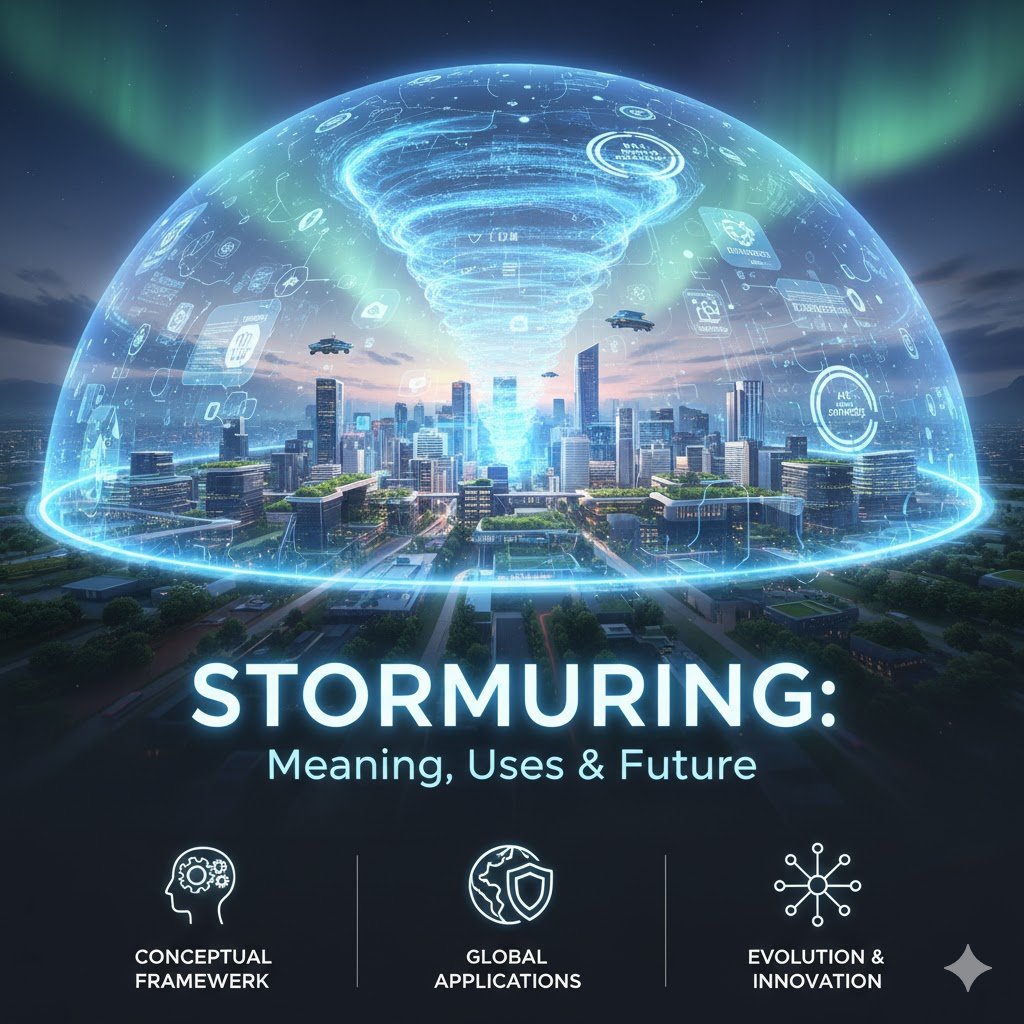In a world that’s constantly changing, we often need new ideas, new words, and new ways of thinking to deal with uncertainty. One such emerging concept is “Stormuring.” It’s a term that sounds powerful and a bit mysterious, combining the words storm and nurturing and that’s exactly what it represents: the art of finding structure, growth, and creativity within chaos.
Although it’s a relatively new term, stormuring is gaining attention across creative industries, innovation spaces, and even climate resilience planning. Let’s explore what it means, how it’s used, and what the future of stormuring might look like.
Contents
Meaning of Stormuring
At its core, Stormuring means channeling the energy of disruption into constructive outcomes. It’s about turning turbulence whether in business, environment, or personal life into a force for innovation and renewal.
Think of a “storm” as any form of change or challenge: market shifts, natural disasters, emotional upheavals, or social transformations. To “stormure” is to face that storm head on not by resisting it, but by nurturing something valuable through it.
It’s the balance between chaos and control, creativity and discipline, reaction and reflection. Stormuring asks a simple but powerful question: “What can we build out of this storm?”
How Stormuring Is Used
While the term itself is new, the principles behind stormuring are already being applied in several fields. Here are the key areas where stormuring is making an impact:
1. In Business and Innovation
In business strategy, stormuring is like the next step after brainstorming. Traditional brainstorming encourages wild ideas, but it often lacks structure or follow-through. Stormuring adds that missing piece combining free-flowing creativity with structured evaluation.
Teams that “stormure” don’t just throw ideas around; they refine them through focused discussion, testing, and iteration. The process usually follows steps such as:
- Defining the problem clearly
- Generating diverse ideas
- Selecting promising concepts
- Prototyping and testing
- Adapting based on results
This approach helps organizations stay agile during crises, market shifts, or competitive pressures. Instead of panicking in uncertainty, they use it as fuel for innovation.
2. In Climate and Environmental Planning
Another fascinating use of stormuring is in climate resilience. Environmental scientists and urban planners use it as a metaphor for dealing with repeated or compounding storms literal and figurative.
In this sense, stormuring means designing systems that don’t just survive one crisis but can adapt and grow stronger after each event. For example, a stormured city might invest in flexible infrastructure that recovers quickly after floods or heatwaves, using data and community feedback to improve each time.
It’s about resilience through learning, not just recovery.
3. In Digital and Creative Industries
Marketers, designers, and digital creators have also started embracing stormuring as a mindset. In the digital world, trends shift overnight — algorithms change, audiences evolve, and new platforms appear. Stormuring encourages creative teams to stay fluid, to build campaigns and content that can adapt to real-time feedback and data.
Rather than sticking to rigid long-term plans, stormuring allows flexibility, experimentation, and evolution. It’s a way of surfing the digital storm instead of getting drowned by it.
4. In Personal Growth and Mindset
On a personal level, stormuring has a powerful psychological meaning. Life, after all, is full of storms loss, uncertainty, and change. Stormuring teaches us to find meaning in those experiences instead of resisting them.
When we stormure our emotions or challenges, we use them as opportunities for reflection, creativity, and personal growth. It’s the mindset of turning breakdowns into breaktpractice and it’s becoming a core idea in modern self-development and coaching practices.
Benefits of Stormuring
Stormuring brings together creativity, resilience, and adaptability. Its key benefits include:
- Encourages innovation under pressure: Helps teams or individuals stay creative when faced with disruption.
- Builds long-term resilience: Promotes systems and mindsets that can handle ongoing change, not just one-off events.
- Improves collaboration: The process is structured yet inclusive, encouraging multiple perspectives and continuous feedback.
- Boosts adaptability: Instead of fearing uncertainty, stormuring trains people to work with it.
- Inspires emotional growth: Teaches individuals how to navigate personal “storms” and emerge stronger.
Challenges in Stormuring
Despite its promise, stormuring also faces some challenges:
- Lack of standardization: As a new concept, it doesn’t yet have a universally accepted framework.
- Requires skillful facilitation: True stormuring blends creativity with structure — and not everyone is trained for that balance.
- Potential for fatigue: Constant adaptation without rest can lead to burnout if not managed mindfully.
- Cultural resistance: Some organizations still cling to rigid hierarchies and fixed plans, which can clash with stormuring’s fluid nature.
Overcoming these hurdles will be crucial for stormuring to mature as a recognized methodology.
The Future of Stormuring
The future of stormuring looks bright and increasingly relevant.
As the world becomes more volatile, uncertain, and interconnected, we need tools that help us thrive in turbulence. Stormuring could become a defining framework for the 21st century guiding businesses, governments, and individuals toward more adaptive, creative, and resilient ways of thinking.
Here’s what we might expect:
- Standardized frameworks: Courses, certifications, and toolkits for applying stormuring in various fields.
- Integration with AI and data analytics: Smart tools that help teams test ideas and respond dynamically to changing environments.
- Use in education: Teaching young people how to think flexibly, collaborate effectively, and innovate under uncertainty.
- Cultural adoption: The word “stormuring” could enter mainstream vocabulary like “pivot” or “resilience.”
Conclusion
Stormuring is more than a buzzword — it’s a philosophy for modern life. It invites us to look at storms not as threats but as opportunities for transformation. Whether in business innovation, climate resilience, digital strategy, or personal growth, stormuring teaches us to nurture progress through chaos.
In a world that never stops changing, stormuring reminds us of something simple yet profound: we can’t stop the storm, but we can learn to grow within it.
